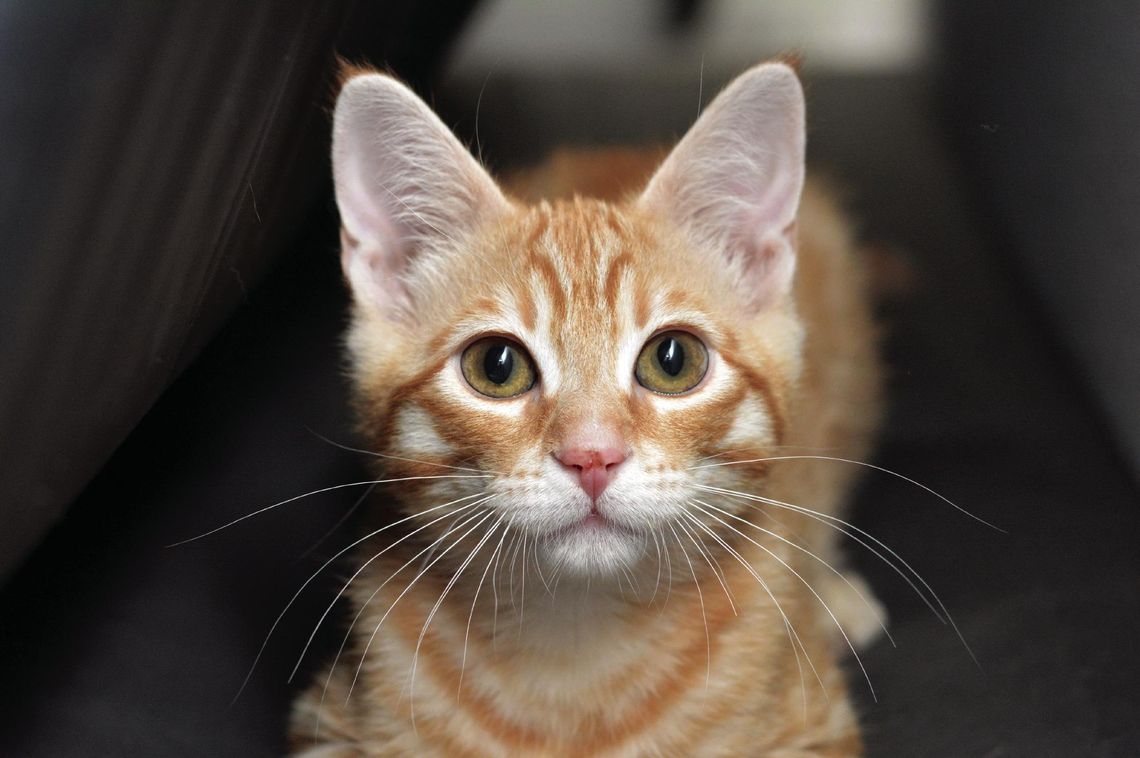Every March through October, Texas experiences kitten season. This is great because, yay, kittens: sweet, tiny, extra cuddly. Plus, they star in millions of videos shared online, providing a much-needed serotonin boost to all those who click them.
But there is a serious side to kitten season in that every unspayed mother cat can give birth to up to seven kittens per litter, which equals a higher-than-average number of kittens brought into animal shelters around the country.
In response to this annual increase, the American Humane Society declared June as National Adopt A Shelter Cat Month, a designation put in place 45 years ago in order to spread awareness regarding the rescue and adoption of shelter cats.
Minnie Buckhaults, San Marcos Regional Animal Shelter’s Community Engagement Coordinator, said that although kitten season peaks in June, the city’s need for community fosters persists throughout the summer and into fall.
“We take in so many kittens from March through October,” Buckhaults said. “There was one week where we took in 17 bottle babies. If community members are able to find them a foster or adoptive home, that is a huge help to us.”
With a larger number of community cats, the likelihood of finding kittens also increases, but Buckhaults cautions everyone to refrain from immediately interfering with community cats until they are able to ascertain whether or not the animals are in imminent danger.
“It’s important to remember when you encounter a kitten in the wild, a lot of times Mom will leave kittens to go hunt,” Buckhaults said. “That doesn’t mean they’re abandoned.”
She suggested that if a person is in a position to return to the site and check on the kittens later, that would be an ideal situation. “If they’re still meowing loudly, or if it looks like they have crusties in their eyes, then you would need to contact one of our animal protection officers,” Buckhaults said. The contact information for San Marcos and Hays County is available on the Animal Services page at sanmarcostx.gov/203/Animal- Services.
After determining whether a kitten is at-risk or abandoned, one option is calling an animal protection officer, who will take the kitten or kittens to the shelter. A second option is fostering, either within your own home or with one of the approved fosters who volunteer through Animal Services.
“Keeping animals, especially ones that are this young, in an animal shelter can be worse for them,” Buckhaults said. “So if you’re able to open a spare room for two weeks even, that is so valuable, especially to keep that kitten healthy, to help them socialize and fit better into their forever homes.”
While SMRAS’ receiving and reclaiming hours of operation are from 8 a.m. to 6 p.m. Monday through Friday, occasions may arise when a person encounters an at-risk animal outside these hours of business. Ideally, a vet visit would be in order before the animal is brought into a home, especially in the presence of other pets.
“Sometimes the vet timeline doesn’t always work out,” Buckhaults said. “If someone did find a kitten or even an adult cat, I would advise putting it into a small enclosed area and doing a short isolation period. That can be a guest bathroom or a guest bedroom. If you do have any other cats in the home, keep them separated.”
Buckhaults recommended a quarantine period of three days before introducing them to other animals in the home, to ensure that the cat or kitten doesn’t have any communicable illnesses or parasites.
If introducing a kitten into the home is not an option, however, a number of animal advocate groups online can help out.
“We have quite a few amazing advocate cat groups online that do care greatly about the overpopulation crisis, making sure that dogs and cats get great homes,” Buckhaults said.
One such group is the Hays County Urgent Pet Rehome Group on Facebook. The goal of this community network is to help keep as many Hays County pets in homes and out of shelters, and to serve as an alternative to owner surrender.
SMRAS relies on a number of pet fosters throughout the year, but they are always on the lookout for more.
“Our fosters do get overwhelmed with kittens and other animals in need,” Buckhaults said. “We’re always looking for new foster homes. Even if it’s something you only do once every month or every quarter, it’s so helpful to shelters in the area.”
Find out more about fostering on the website at sanmarcostx.gov/3484/ Get-Involved or by contacting a foster coordinator at [email protected].
In San Marcos and the greater Hays County area, animal advocates have been working on programs that address the issue of unspayed community cats before they add to the already burgeoning feline population.
This is part one in a series of articles about current initiatives regarding pet welfare in San Marcos and Hays County. Part two will discuss these developments in more detail.
...If you’re able to open a spare room for two weeks, that is so valuable, especially to keep that kitten healthy, to help them socialize and fit better into
their forever homes.
— Minnie Buckhaults, Community Engagement Coordinator







